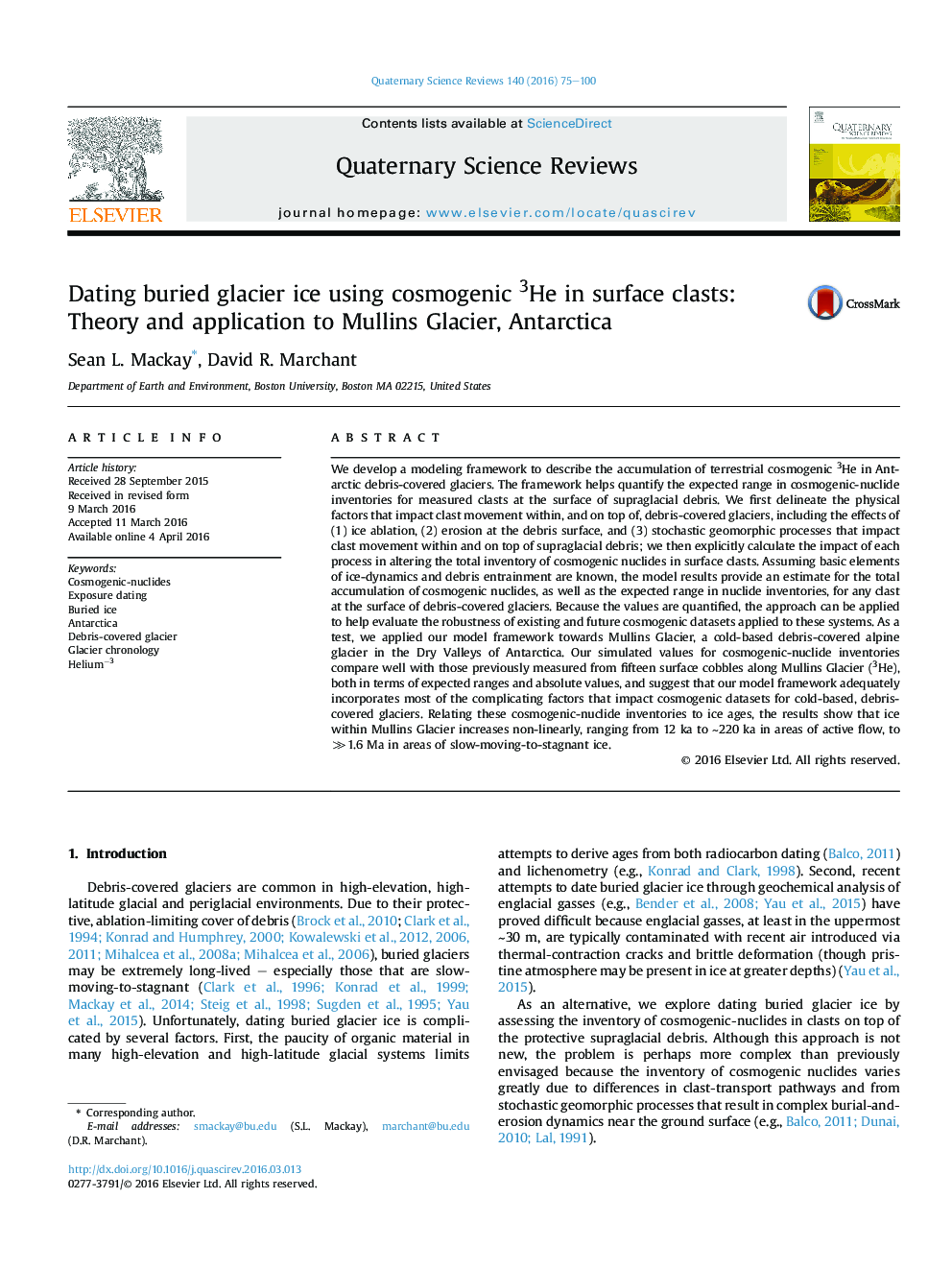| کد مقاله | کد نشریه | سال انتشار | مقاله انگلیسی | نسخه تمام متن |
|---|---|---|---|---|
| 6445463 | 1640795 | 2016 | 26 صفحه PDF | دانلود رایگان |
عنوان انگلیسی مقاله ISI
Dating buried glacier ice using cosmogenic 3He in surface clasts: Theory and application to Mullins Glacier, Antarctica
دانلود مقاله + سفارش ترجمه
دانلود مقاله ISI انگلیسی
رایگان برای ایرانیان
کلمات کلیدی
موضوعات مرتبط
مهندسی و علوم پایه
علوم زمین و سیارات
زمین شناسی
پیش نمایش صفحه اول مقاله

چکیده انگلیسی
We develop a modeling framework to describe the accumulation of terrestrial cosmogenic 3He in Antarctic debris-covered glaciers. The framework helps quantify the expected range in cosmogenic-nuclide inventories for measured clasts at the surface of supraglacial debris. We first delineate the physical factors that impact clast movement within, and on top of, debris-covered glaciers, including the effects of (1) ice ablation, (2) erosion at the debris surface, and (3) stochastic geomorphic processes that impact clast movement within and on top of supraglacial debris; we then explicitly calculate the impact of each process in altering the total inventory of cosmogenic nuclides in surface clasts. Assuming basic elements of ice-dynamics and debris entrainment are known, the model results provide an estimate for the total accumulation of cosmogenic nuclides, as well as the expected range in nuclide inventories, for any clast at the surface of debris-covered glaciers. Because the values are quantified, the approach can be applied to help evaluate the robustness of existing and future cosmogenic datasets applied to these systems. As a test, we applied our model framework towards Mullins Glacier, a cold-based debris-covered alpine glacier in the Dry Valleys of Antarctica. Our simulated values for cosmogenic-nuclide inventories compare well with those previously measured from fifteen surface cobbles along Mullins Glacier (3He), both in terms of expected ranges and absolute values, and suggest that our model framework adequately incorporates most of the complicating factors that impact cosmogenic datasets for cold-based, debris-covered glaciers. Relating these cosmogenic-nuclide inventories to ice ages, the results show that ice within Mullins Glacier increases non-linearly, ranging from 12 ka to â¼220 ka in areas of active flow, to â«1.6 Ma in areas of slow-moving-to-stagnant ice.
ناشر
Database: Elsevier - ScienceDirect (ساینس دایرکت)
Journal: Quaternary Science Reviews - Volume 140, 15 May 2016, Pages 75-100
Journal: Quaternary Science Reviews - Volume 140, 15 May 2016, Pages 75-100
نویسندگان
Sean L. Mackay, David R. Marchant,